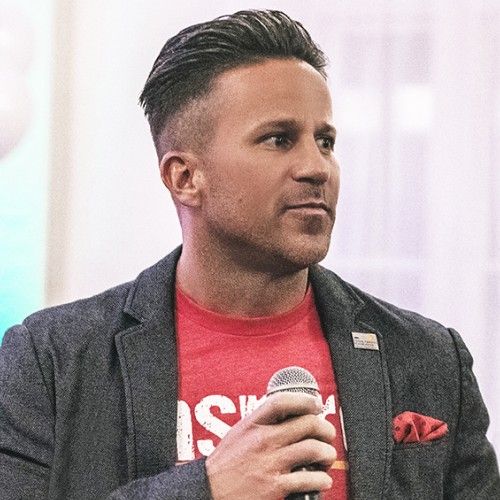Jean, the CEO of a tech startup, stood at the crossroads of two seemingly opposing forces: data and innovation. Her company was known for its creativity, launching bold new products that had disrupted the market. But after a string of ambitious projects that didn’t quite land, Jean realized something was missing—a structure to harness their creativity and track their successes in a way that could inform future efforts. She needed a blend of data-driven decisions and innovation-fueled risk-taking, but the challenge was bringing these worlds together.
She’d recently heard a competitor’s CEO boast about spending $10,000 on a Google Ads campaign to “see what sticks.” But when Jean asked him how he planned to track success, he shrugged, saying he would "just know." This lack of clarity alarmed her—without concrete metrics, how could he be sure of what worked or what failed? He was gambling on creativity alone, without the structure necessary to analyze and replicate success. Jean knew that this approach was too risky. Innovation needed data, just as much as data needed creativity.
The Need for Both: Data and Innovation
Jean understood the emotional weight behind this balance. On one hand, innovation fuels excitement. It’s the driving force that pushes boundaries and allows people to dream bigger. Employees felt empowered when their ideas were heard, and risks taken. But when risks weren't measured properly, failures could demoralize teams and waste resources.
On the other hand, a purely data-driven culture can feel suffocating, stifling creativity with its constant focus on numbers. People become afraid to think outside the box, worried their bold ideas will be shot down because they don’t have enough immediate proof of success. The key, Jean realized, was merging these two cultures to unlock their full potential.
To maximize efficiency and spark groundbreaking ideas, leaders like Jean must cultivate a culture that thrives on both creativity and data-backed strategies. The emotional payoff was significant—teams could work with confidence, knowing their innovations were being tested and supported by a clear, measurable framework. It wasn’t just about choosing one approach over the other. It was about giving creativity the structure to flourish and using data to refine and improve ideas in real-time.
Building a Scientific Approach to Innovation
Jean set out to create a scientific process to guide innovation. Here’s how she did it:
- Start with a Hypothesis: Just like in science, every innovation should begin with a clear hypothesis. What are you trying to achieve? What problem are you solving? By asking these questions, Jean's team could approach new ideas with intention rather than aimlessly experimenting.
- Allocate Resources Intelligently: Instead of dumping all resources into one creative idea and hoping for the best, Jean divided her budget into smaller, controlled experiments. This allowed her to test multiple approaches simultaneously.
- Define Key Metrics: Success can’t be measured without clearly defining what it looks like. Jean outlined specific metrics for each initiative, such as click-through rates for ads, customer engagement, or sales growth. These provided her team with the data they needed to make informed decisions.
- Test and Analyze: Once Jean's team launched their innovative ideas, they tracked results with precision. They set up A/B tests, comparing different approaches side by side. This gave them insights into what worked and what didn’t, allowing them to adapt quickly without wasting resources.
- Learn and Iterate: After gathering data, the final step was learning. This was where the emotional impact really came in. Teams celebrated successes but also viewed failures as opportunities for growth. Rather than feeling deflated by a missed target, Jean’s structured approach helped them see the path forward.
For Jean, this balance wasn’t just about making smart business decisions—it was about fostering a culture that gave people the freedom to innovate without fear of failure, backed by the security of data. The emotional stakes were high. In a world where uncertainty can paralyze teams, having a clear path gave everyone—from the newest hire to senior leadership—the confidence to push boundaries and dream big.
This blend of data and innovation allowed Jean's company to maximize efficiency and produce breakthrough ideas. They no longer had to choose between creativity and clarity—they had both. Leaders who can find this balance inspire their teams to do more than just follow trends. They empower them to lead the way.
Jean’s journey toward merging data-driven decisions with innovation didn’t happen overnight. In fact, it was sparked by a moment of deep frustration. This resonated emotionally with her employees because it acknowledged both their desire to innovate and their fear of wasted effort. It wasn’t just about “being creative”—it was about using that creativity in a way that would yield tangible, impactful results.
The Steps to Merging Data and Innovation
Jean laid out a new approach to the team, offering a clear, actionable path forward:
- Create a Testing Environment: Innovation needed a controlled space where ideas could be safely tested and refined. Jean set up a "sandbox" where teams could experiment with new ideas in a lower-stakes environment, tracking progress with small data points before committing major resources.
- Implement a Feedback Loop: Rather than waiting until the end of a project to measure its success, Jean established ongoing checkpoints where teams would review performance metrics. This feedback loop allowed for real-time adjustments, giving the flexibility to innovate while still adhering to measurable goals.
- Encourage Risk with Accountability: Jean didn't want to dampen her team's enthusiasm for trying bold new ideas. To protect their creative spirit, she set clear expectations for accountability. Every risk taken needed a documented hypothesis, a plan for how to measure success, and a timeline for review.
- Celebrate Learning, Not Just Success: One of Jean's most impactful emotional shifts came when she began celebrating what the team learned, not just what they accomplished. Innovation often meant failure, but failure with insight was seen as progress. This created a culture where teams weren’t afraid to fail because every failure was a step closer to success.
- Data as a Catalyst, Not a Cage: Data was no longer seen as something that constrained creativity, but as a tool that made creativity more impactful. By treating data as the partner to innovation, Jean ensured that her team saw it as something that helped their ideas come to life in the most effective way.
Jean realized that this blend wasn’t just about metrics and goals. It was about creating a culture where people felt safe to push boundaries, where innovation was celebrated but always tethered to something tangible. And in this balance, they found both success and satisfaction, knowing that their work was not just innovative, but meaningful.




































































